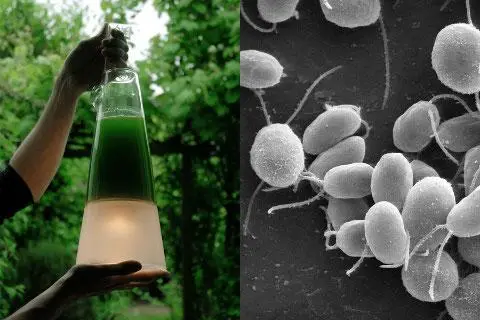Researchers from the universities of Yansei and Stanford carried out an experiment in which, from the photosynthesis process carried out by plants, electrical energy was created. Based on this idea, the industrial designer Mike Thompson has devised a lamp that is powered by the energy generated by algae enclosed in a small glass chamber that the lamp itself has. The energy generated by the algae is stored in a battery.
Artificial photosynthesis
Photosynthesis is a process by which plants, algae, and some bacteria capture the energy of light and use it to transform inorganic matter from their external environment into organic matter that they will use for their growth and development. This process is essential to preserve life on the planet since organic matter is what is part of living beings. Without organic matter, there is no life. And without photosynthesis in algae and plants, there would be no organic matter. Each year, algae and plants convert nearly 100 billion tons of carbon into organic matter.
The lamp
The Latro lamp (which means thief in Latin) is a pendant lamp that draws its energy from algae. These organisms only need sunlight, carbon dioxide, and water to survive. Therefore, it is necessary, yes, to breathe to generate carbon dioxide. As soon as it expires inside the lamp through its handle, the process of energy production begins, which is stored in a battery that will later be used at night to emit light.
Currently, there are a large number of chemical projects aimed at the artificial reproduction of photosynthesis, with the intention of being able to capture solar energy on a large scale in the not too distant future. An artificial molecule capable of generating energy from light and inorganic matter has yet to be synthesized, but the prospects are promising and scientists are optimistic. There are already some projects that are studying using seaweed for energy

